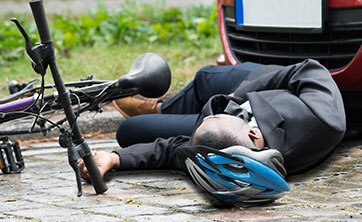Search

Cycling is a fantastic way to stay fit, save money, and reduce your carbon footprint. However, it also comes with its own set of risks. Bicycle accidents can result in serious injuries, but many of them are preventable. By taking a few key precautions, you can significantly enhance your safety on the road. Here’s a comprehensive guide to help you avoid bicycle accidents.
Your helmet is your first line of defense in an accident. A properly fitted helmet can reduce the risk of serious head injury by up to 85%. Make sure your helmet meets safety standards and fits snugly without obstructing your vision.
Visibility is crucial for cyclist safety. Wear bright, reflective clothing, especially when riding at dawn, dusk, or night. Equip your bicycle with front and rear lights and ensure reflectors are in place on the pedals and wheels. These measures make you more visible to drivers and other road users.
A well-maintained bike is less likely to malfunction. Regularly check your brakes, tires, chain, and gears. Ensure your tires are properly inflated and that your brakes are responsive. A quick pre-ride inspection can prevent mechanical failures that might lead to accidents.
Cyclists must adhere to the same traffic laws as motorists. Obey all traffic signals and signs, ride in the direction of traffic, and use hand signals to indicate turns. This predictability helps drivers understand your intentions, reducing the risk of collisions.
Keep your eyes on the road and be aware of your surroundings. Avoid using headphones or your phone while riding. Stay focused on the traffic, pedestrians, and any potential hazards.
Assume that drivers do not see you. Be prepared to take evasive action if necessary. Keep a safe distance from vehicles, especially large ones like trucks and buses, which have significant blind spots.
Intersections are hotpots for accidents. Slow down and be extra vigilant. Make eye contact with drivers to ensure they see you. Cross intersections carefully and be prepared for sudden movements from vehicles.
When riding near parked cars, stay at least a door’s width away. This distance helps you avoid getting hit by suddenly opening car doors, a common cause of accidents known as “dooring.”
Weather can significantly impact your ride. Wet or icy roads reduce traction and increase stopping distances. Dress appropriately for the weather, use fenders to reduce splash, and consider wider tires for better grip in adverse conditions.
Improving your cycling skills can enhance your safety. Consider taking a bicycle safety course to learn advanced techniques such as emergency stops and quick turns. Practicing these skills can prepare you to handle unexpected situations effectively.
Cycling is a wonderful activity that offers numerous benefits, but safety should always be a priority. By following these precautions, you can reduce the risk of accidents and enjoy a safer, more enjoyable ride. Remember, your safety is in your hands—stay alert, be visible, and ride responsibly. Happy cycling!